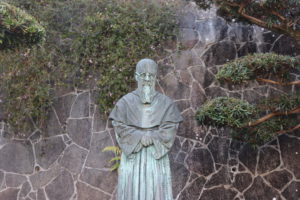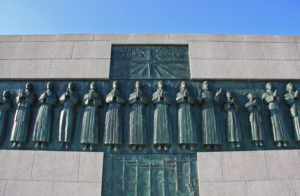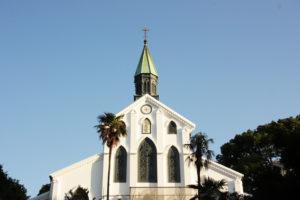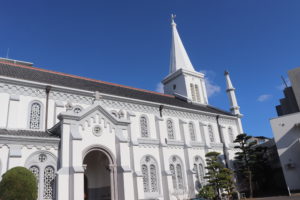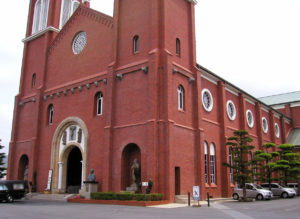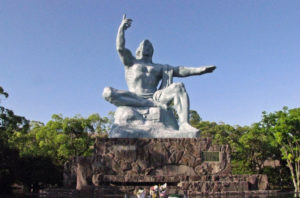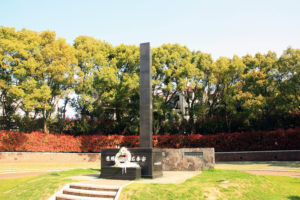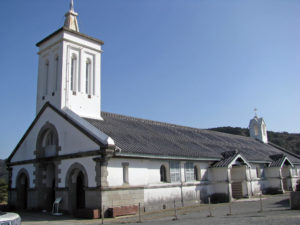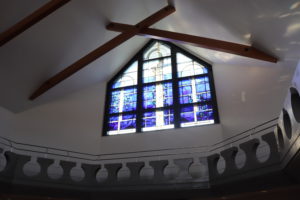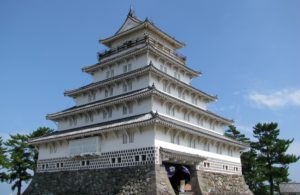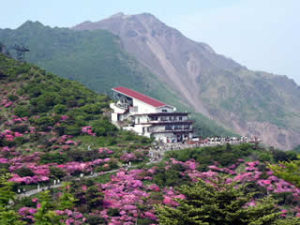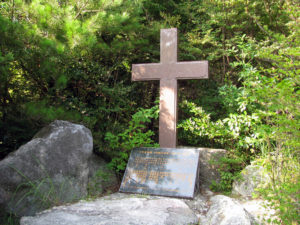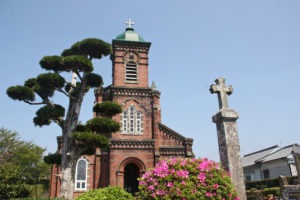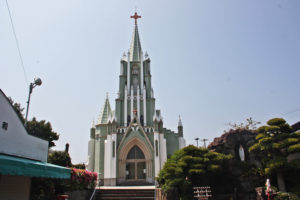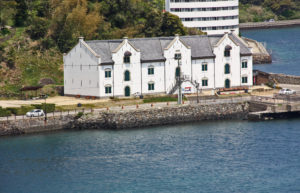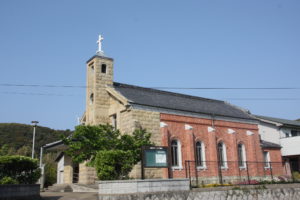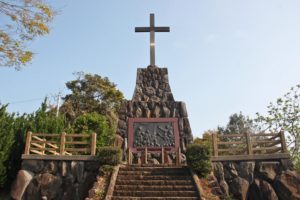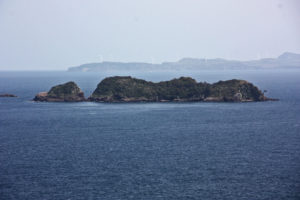6 days Christian Pilgrimage tour in Nagasaki region
This is the model plan for making your customized tour.
 |
|
 |
The tour visits Christian Pilgrimage sites in Sotome, Nagasaki, Shimabara and Unzen
while introducing the following:
How did Japan, whose main religion is Shinto, accept Christianity?
Why did Christianity spread in and around Nagasaki?
Why did Japan ban Christianity even though once accepted it?
How did Christians continue their faith during the ban period?
What kind of oppression and martyrdom took place during the ban on Christianity?
The customized tour is planned as per the following conditions.
1) The tour starts from Fukuoka
・less than 7 persons : chartered taxi with English speaking driver
・more than 8 persons : chartered bus with Japanese speaking driver,
English speaking tour guide navigates the tour
When you have a plan to play golf in Kyushu, please contact us to send
the request using Enquiry form, please click the link below and write your enquiries.
↓ ↓
Itinerary
Day 1 Nagasaki
|
|
Welcome to Fukuoka ! You will be greeted tour guide. Drive to Nagasaki Lunch at Nagasaki Visit Hongouch Church and Saint Kolbe Memorial Museum Visit Mt. Inasa by the use of Slope car Check in the Hotel Own dinner at the restaurant in Nagasaki Stay in Nagasaki |
Day 2 Nagasaki
|
|
Breakfast at the Hotel Visiting Pilgrimage sites in Nagasaki Martyrdom of 26 Saint of Japan Nishizaka hill is the most significant Christian Pilgrimage site in Japan. The 26 Martyrs of Japan were a group of Catholics who were executed by crucifixion on February 5, 1597. The 26 Martyrs Museum Nakamachi Church The Church dedicated to 16 Saints in Nagasaki including Satint Tomas Nishi Lunch in Nagasaki Oura Cathedral The Cathedral is one of the significant Christian Pilgrimage site in Japan. Established 1865, this church is officially known as “Oura Cathedral, the Church of 26 Martyrs.” Glover Garden nine Western style buildings. The Glover’s Residence built in 1863 and is Japan’s oldest wooden Western–style building Urakami Cathedral Constructed in 1914 after ban on Christianity, however destroyed in 1945 by Atomic bomb, and re-built in 1959 Own dinner at the restaurant in Nagasaki Stay in Nagasaki |
Day 3 Nagasaki & Sotome
|
|
Breakfast at the Hotel Exploring Peace Park where the Atomic Bomb dropped in 1945 Atomic Bomb Museum The museum exhibits a number of photograph that depict the devastation caused by atomic bomb showing the lead-up to this tragic day Ground Zero The plutonium atomic bomb exploded about 500m over the central monument at 11:02 a.m. on August 9, 1945. The most part of Nagasaki was destroyed, and a tremendous number of lives were lost Peace Statue Completed in 1955, ten years after the Atomic bombing. The 9.7 meter high statue sitting on a 4 meter tall pedestal. The raised arm points to the threat of nuclear weapons and the out-stretched arm symbolizes peace Drive to Sotome Lunch at Sotome Shitsu Church On an elevation commanding a view over the Sea of Goto, Father Marc Marie de Rotz established a church at his own expense 1882 Endo Shusaku Literary Museum The setting of Endo Shusaku’s novel Silence. Sotome is blessed with a unique history and culture of Christianity Drive to Nagasaki Own dinner at the restaurant in Nagasaki Stay in Nagasaki |
Day 4 Shimabara & Unzen
|
|
After breakfast, check out of the Hotel in Nagasaki Drive to Shimabara Shimabara Castle it was built in 1625 by the feudal load Matsukura Shigemasa, who was regarded as a master of castle building Lunch at Shimabara Drive to Unzen Nita Pass One of the best scenic spot in Unzen. At any time of the year the natural scenery of Nita Pass in Unzen is magnificent. Azaleas, green leaves, brilliant autumnal tints of maples and silver frost represent each season of the year Unzen Jigoku Martyrdom site Jigoku, means Hell, is the number one attraction of Unzen with a peculiar smell of sulfur emitted from the springs, and with white smoke rising from the ground over a wide area Check in the Hotel in Unzen Dinner at the Hotel Stay in Unzen |
Day 5 Hirado
|
|
After breakfast, check out of the Hotel in Unzen Drive to Hitado Lunch at Hirado, local cusine Tabira Church The church was designed by Tetsukawa Yosuke, a famous architect of various churches in Nagasaki-prefecture, and built between 1915 Exploring Hirado St Francis Xavier Memorial Church This church is a catholic church in Hirado, Nagasaki. Hirado is a place where Francis Xavier visited 3 times in Japan to spread Christianity Dutch Trading Post Set up in Hirado in 1609 as the base of operations of the Dutch East India Company in Japan Check in the Hotel Dinner at the Hotel Stay in Hirado |
Day 6 Hirado → Fukuoka
|
|
After breakfast, check out of the Hotel in Hirado Exploring Hirado Yamada Church The Church dedicated to Satint Tomas Nishi, built in 1912 Kurose-no Tsuji Martyrdom site Lunch in Hirado Nakae no Shima Island Martyrdom site observatory place Located two kilometers off the coast of Hirado Island, Nakae no Shima is a small, uninhabited island where religious leaders were executed during the persecution of Christians Drive to Fukuoka Arrive at Fukuoka, end of the tour |
Home Our Services About us Contact us Kyushu Travel Guide


